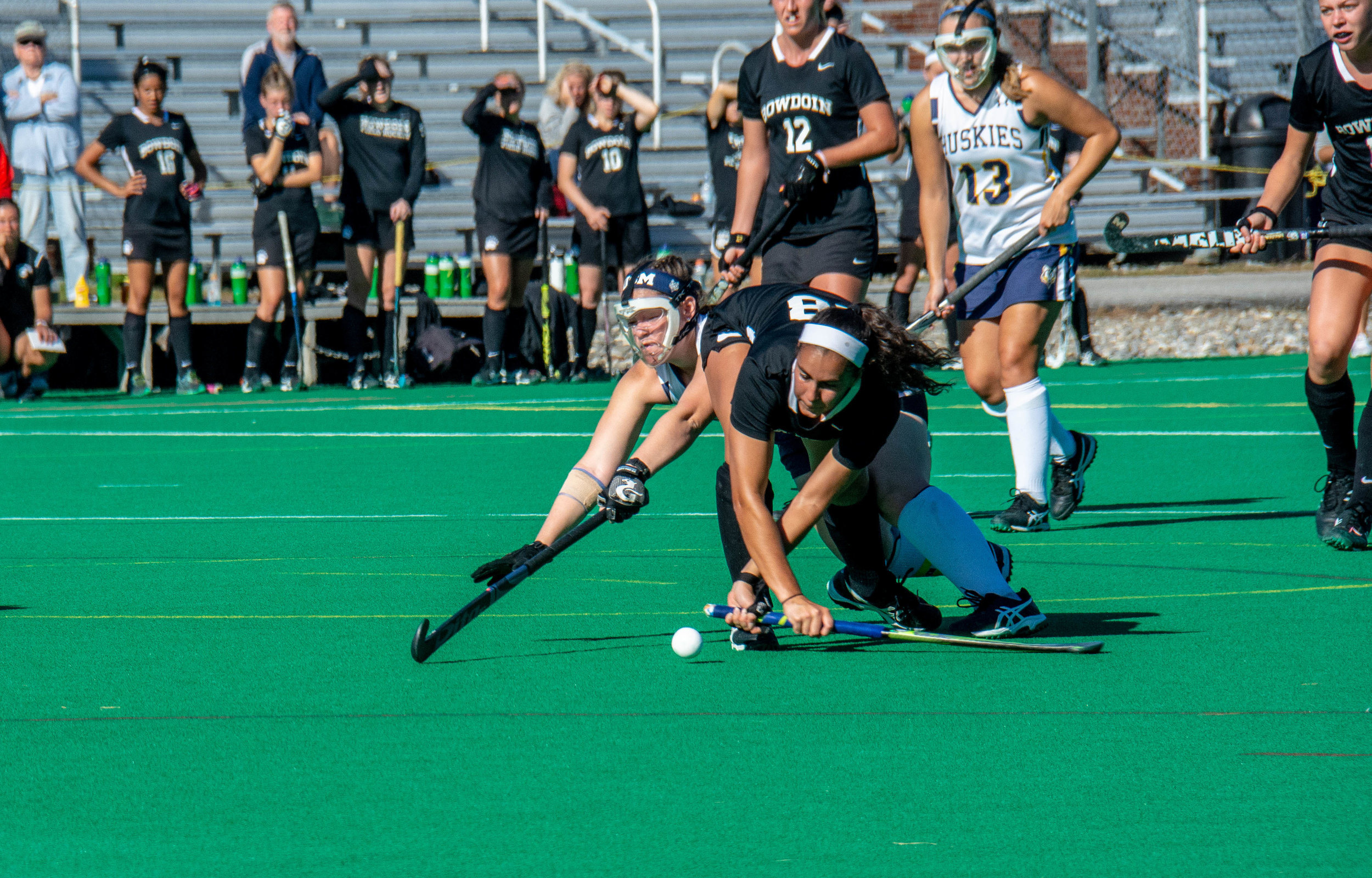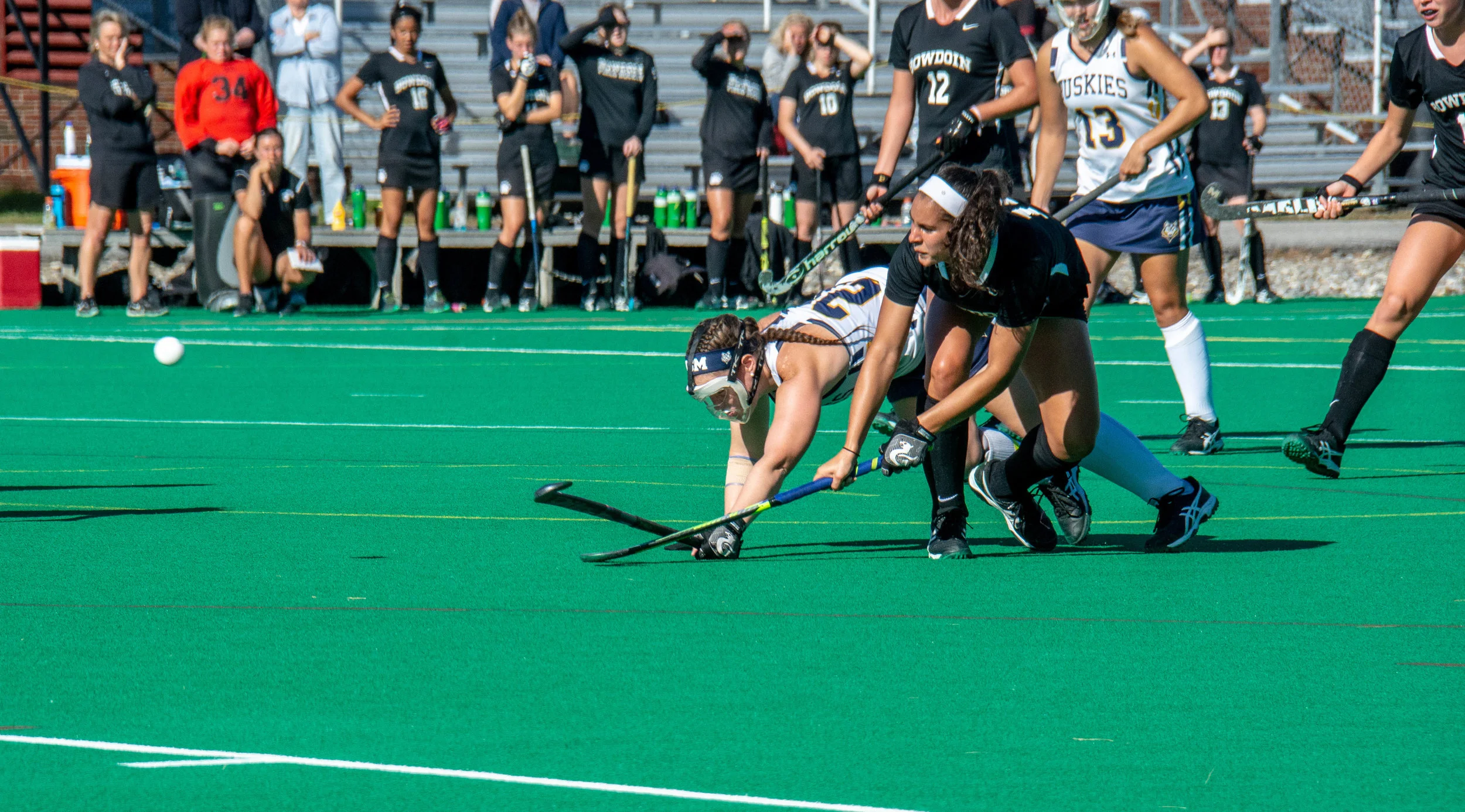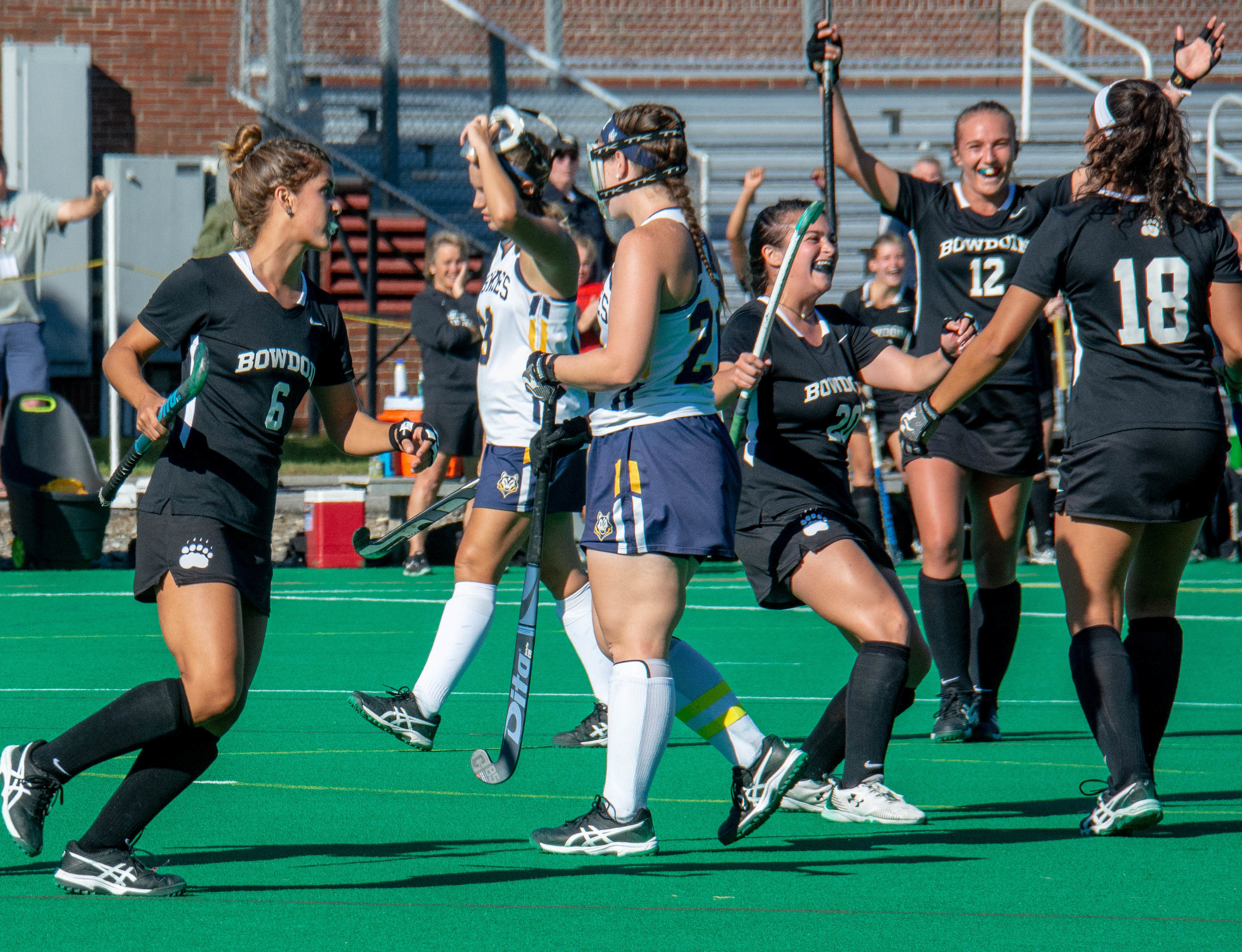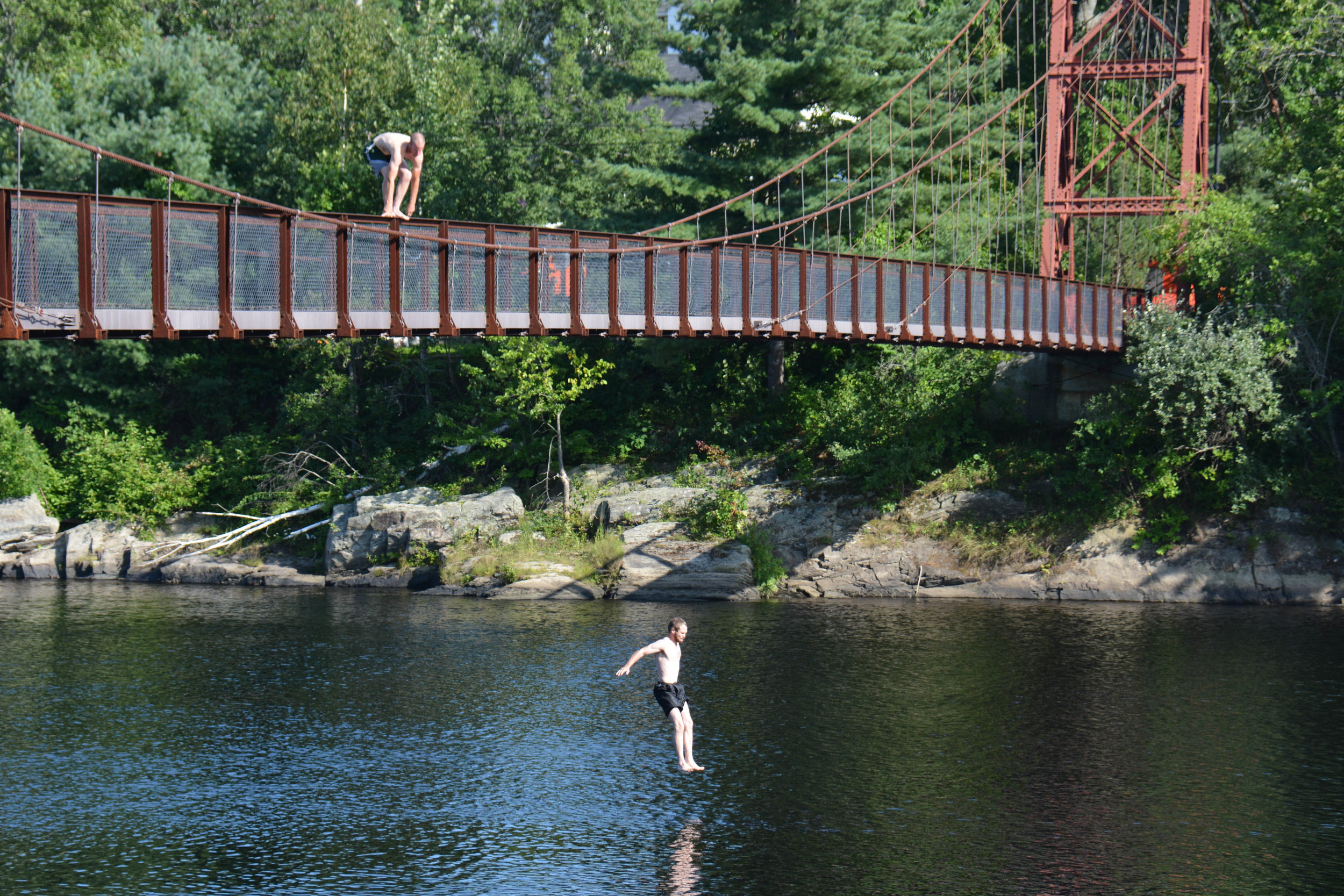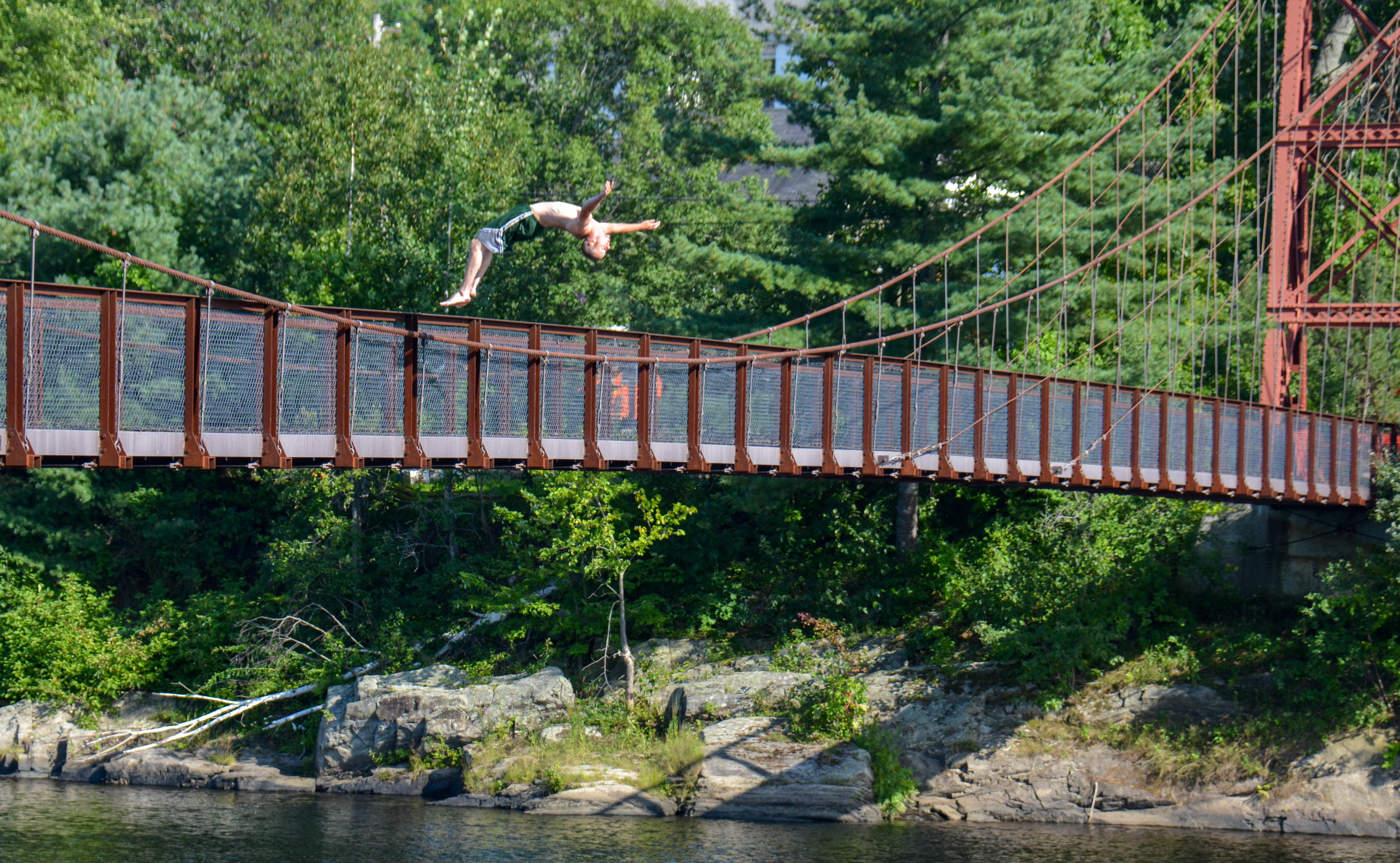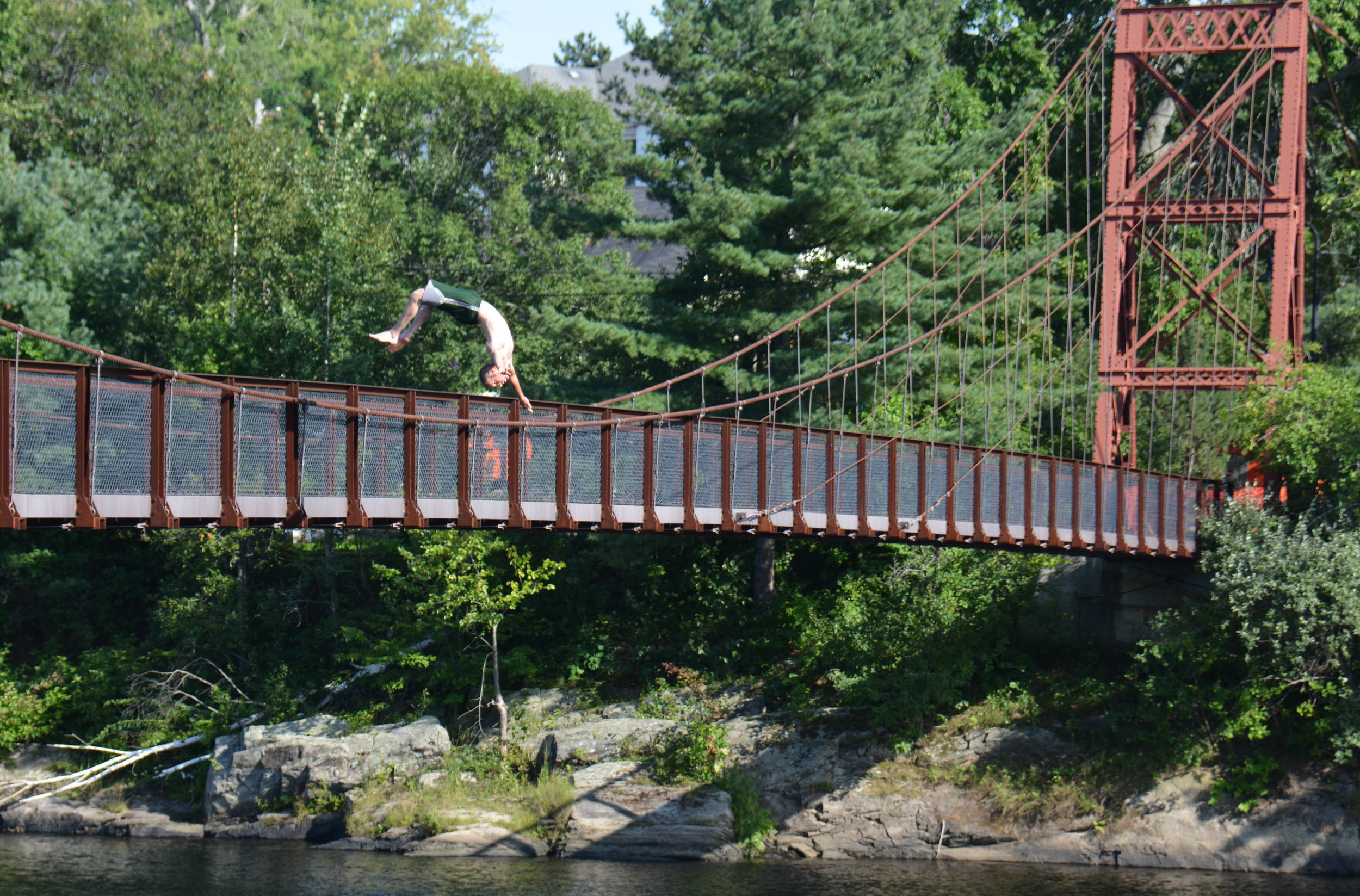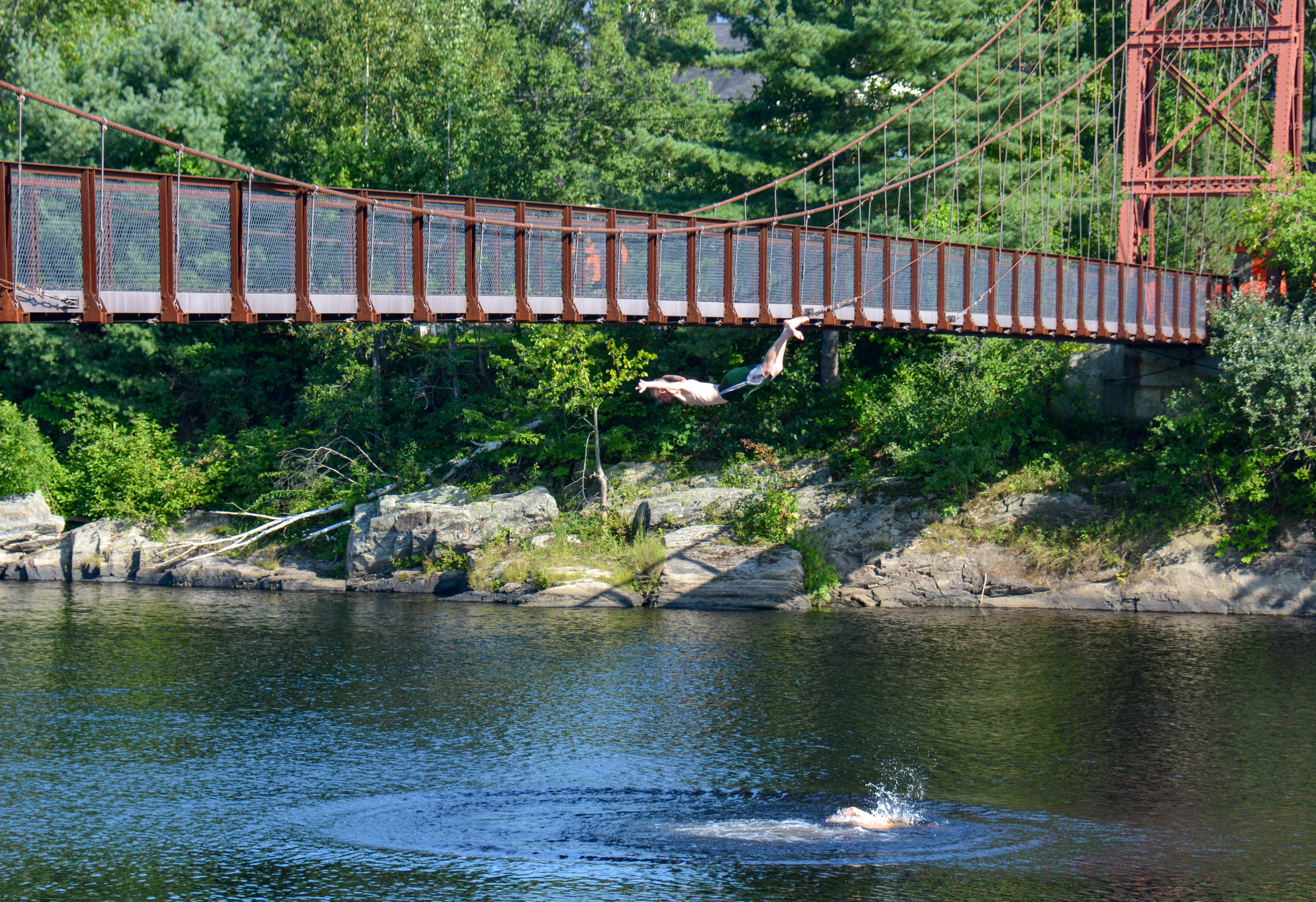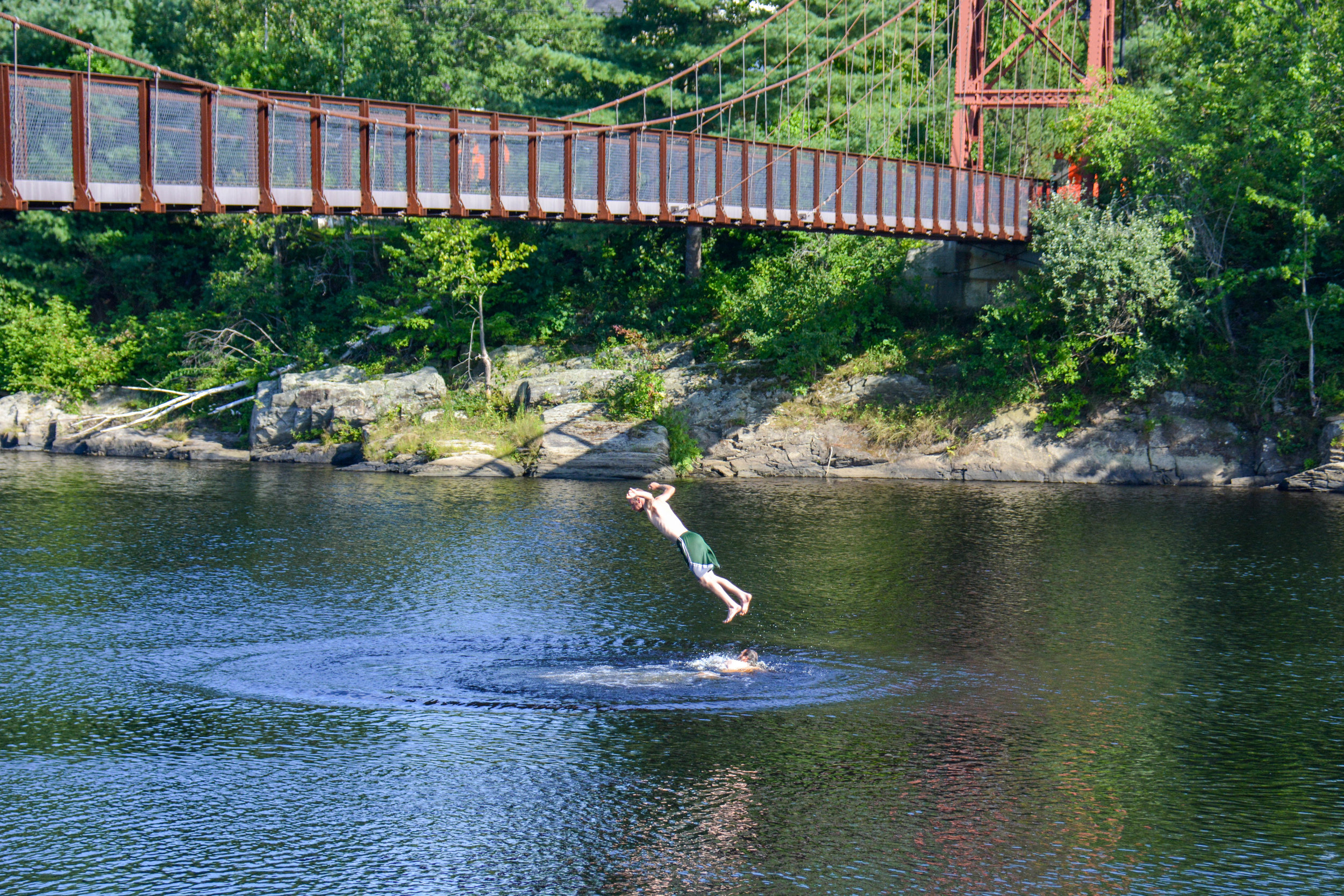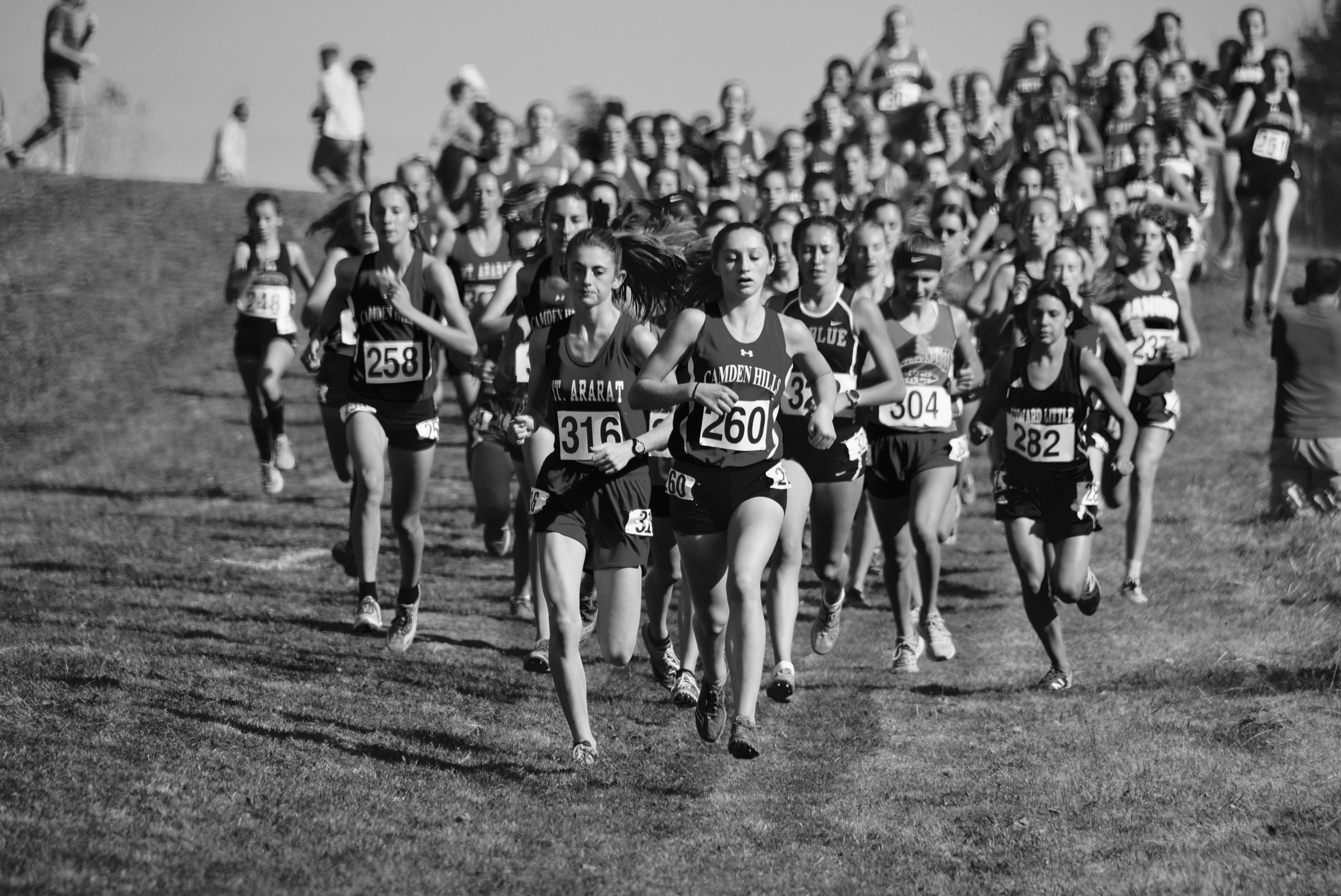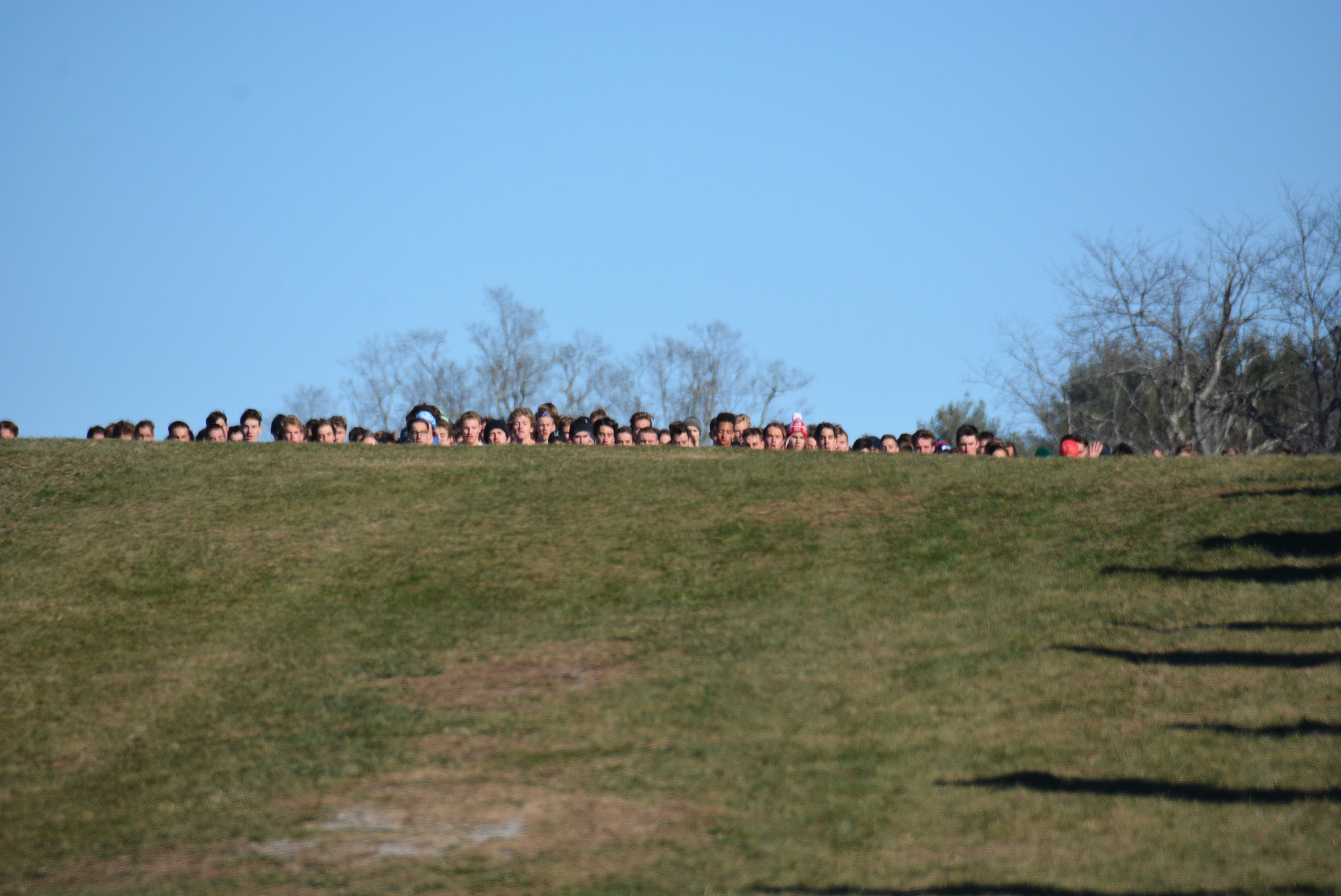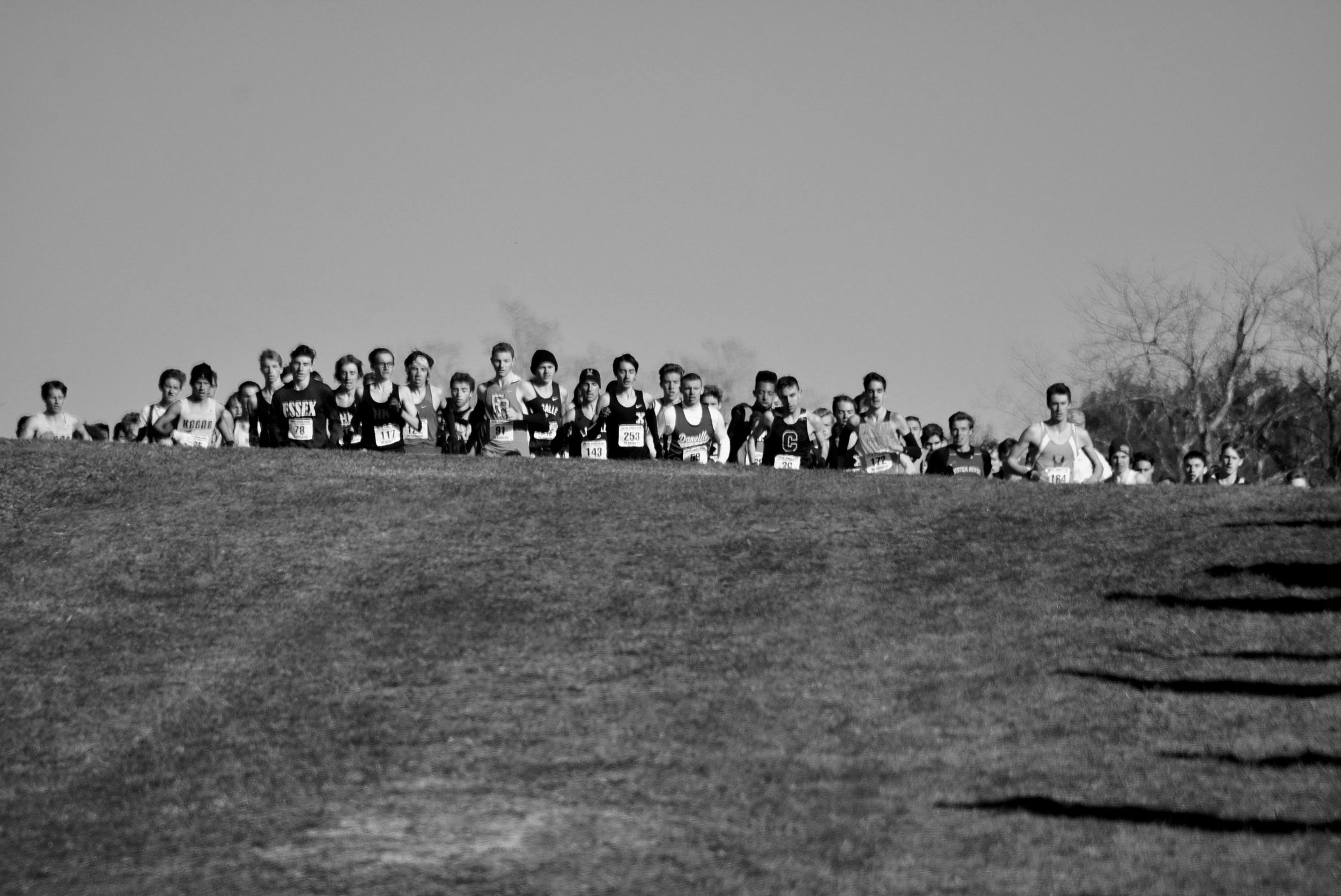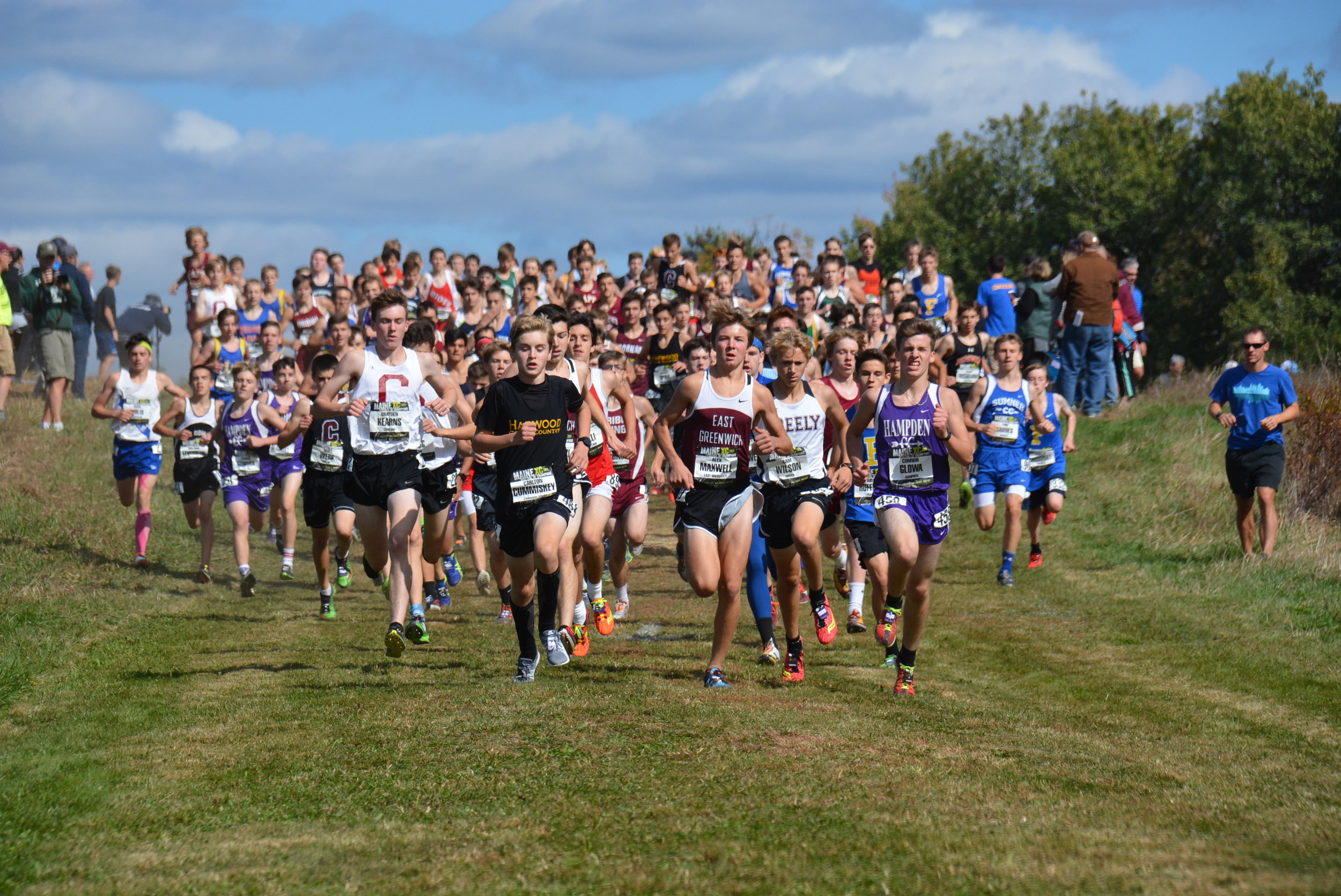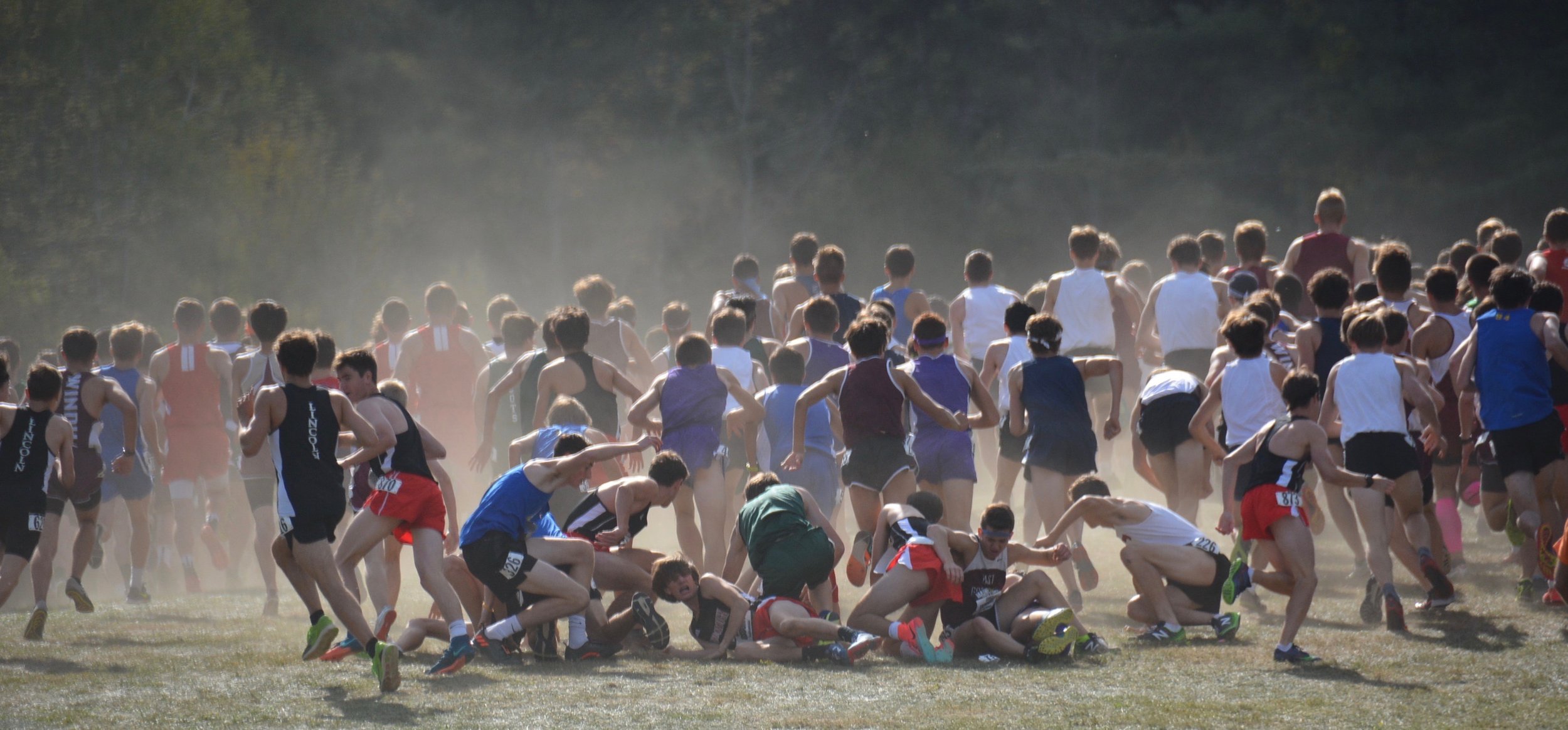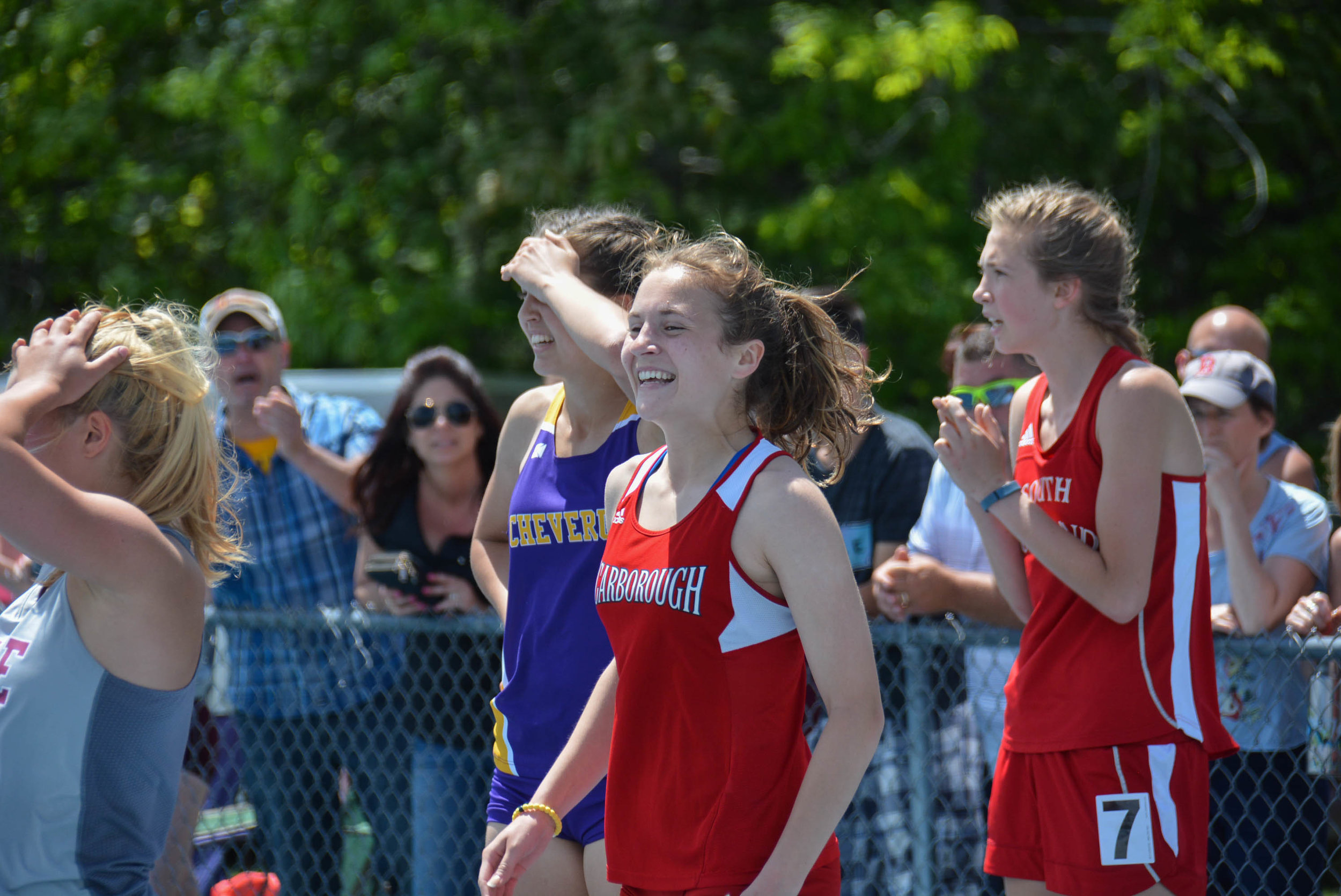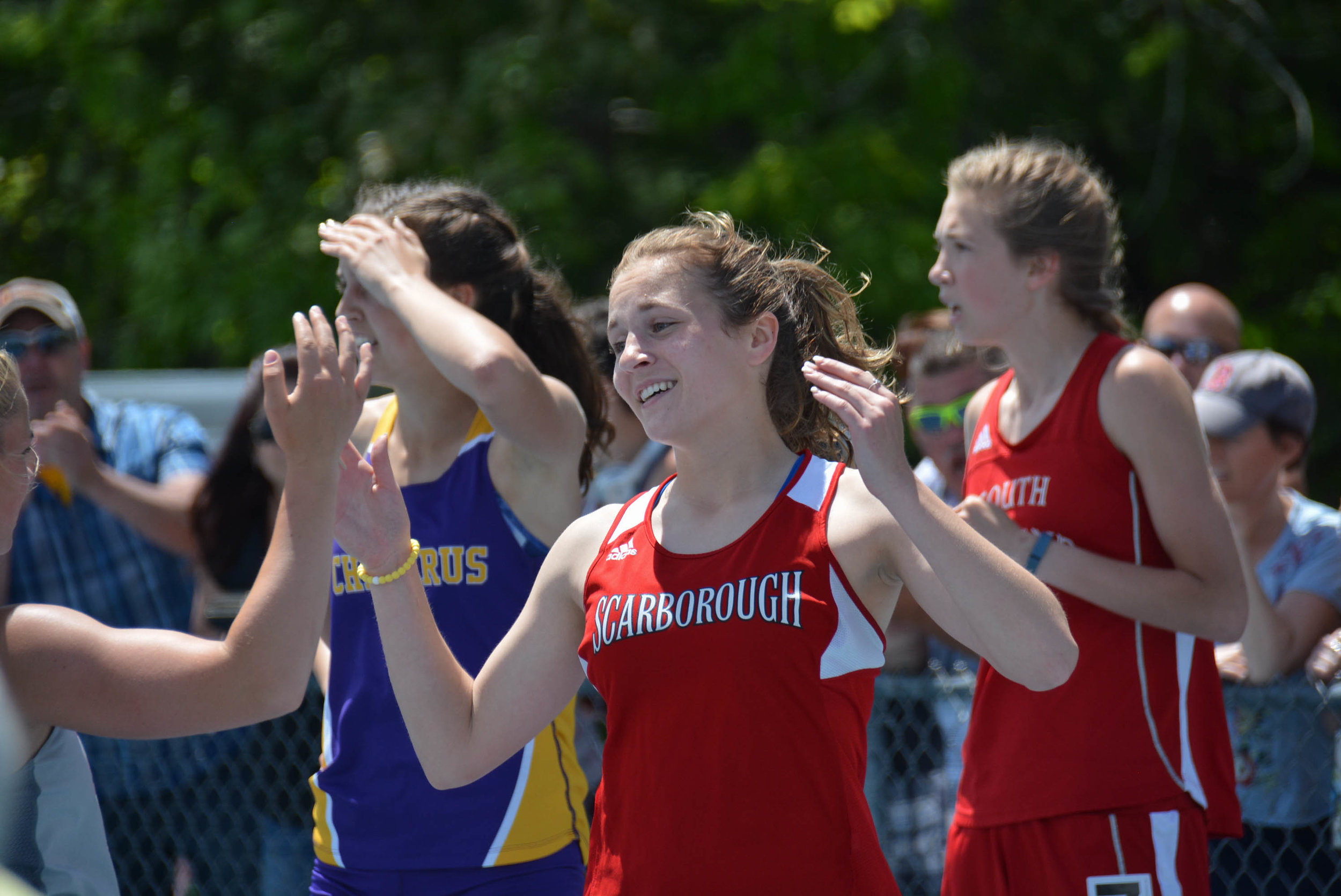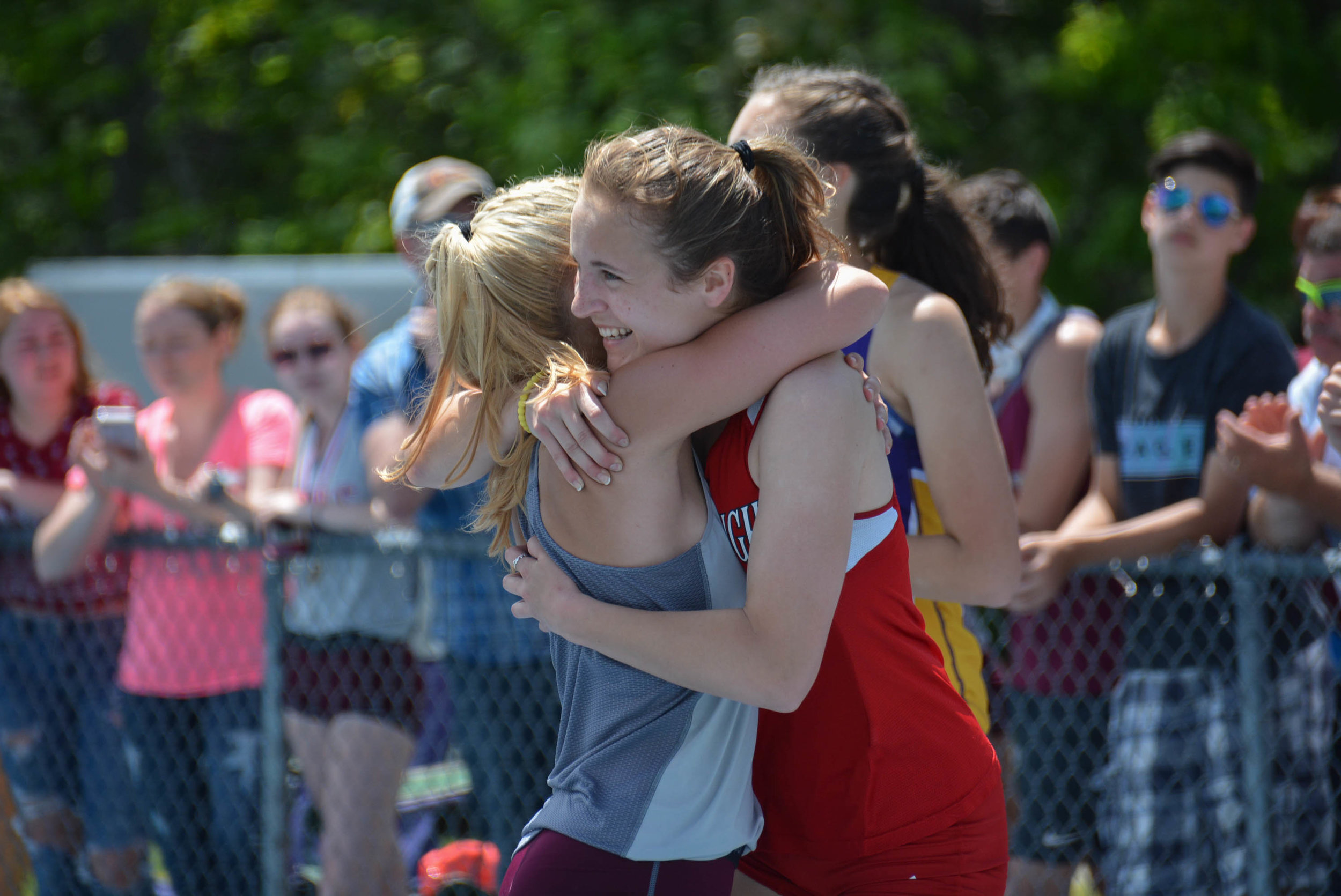A row of fifty heads line the clean horizontal at the crest of a hill. The line of the hill runs from one edge of the frame to the other, the line of heads runs nearly as far.
We are in Maine, in Waldo County. Is this the opening of a tale by Stephen King?
In the next frame the heads are followed by torsos in numbered singlets. In a moment, flowing like water, 250 bodies pour down the hill moving as if connected to one another like parts of a single being, hammering the earth, leaving dust and bits of vegetation fluttering in its wake. It is a cross country race at one of the busiest, and camera friendly, courses in Maine.
Every year a middle school in Belfast hosts some of the biggest races in the state, and New England.
If it is the New England Championship toward the middle of frosty November, the runners, the best of the best, will start with hats, gloves, and long sleeves under team colors. The morning run-through is lit by that certain slant of light; shadows of near leafless trees mark a stark contrast on the rimy grass and highlight the streaks of slowly rising mist. As the light works its way down the trees leaves drop one-by-one. The icy crystals that were the last thing holding them dissolve in the light.
But it could be the State Championship a week earlier or, as every fall, the Northern Maine Regional Cross Country Championships. By regionals the teams have already been pared to their seven fastest runners. The first seven ran together on another course at the prior week’s conference championships. They’re all looking to qualify for the state meet the following weekend. Maybe in Belfast again, or maybe down in Cumberland. Either way, just half the teams will move on so they’re all looking for that one more chance to race.
Or it could be the most transformative of all the races, the Festival of Champions.
On the first Saturday in October, with Indian Summer still blazing away, as many as 1700 high school runners from far and wide show up to run. Sixty-five eager teams from Maine and fifteen or twenty of the elite programs from around New England and the Maritime provinces make the trek to Belfast to show their prowess. Many have come every year since the race first started seventeen years ago.
At Regionals and States, champions are crowned. But at the Festival of Champions, champions are born. Runners are born. Fans are born.
My daughter’s sophomore year, her first running cross-country, marked my first time at Festival. Still not completely over the fact that she had given up soccer, my exploration of the cross country world had been a bit…dutiful.
Sure. I was pleased that she had been scoring for her team, placing in all the regular season meets and sometimes grabbing the third spot behind the two outstanding runners who would lead her team to the Northern Maine Championship a month later. But I had yet to shake the feeling that track and cross country were things athletes did to fill in between seasons. I was fine when she gave up softball for outdoor track her freshman year. Winter track season had been a great addition in high school. She had received accolades, qualified for states and, by spring, even took a podium spot at States.
But I had never been a ballplayer. I had played soccer. And she was a strong, spirited, tough, competitor on the pitch. I was wistful. I missed soccer. I worried that she would end up missing it too.
The structure of the Fesitval provides six or seven competitive races. There are “seeded” races for boys and girls that feature some remarkable athletes, but the structure of the meet provides a series of competitive races across all experience ranges. The seeded races of 200 or more for boys and girls end the day, but freshman races and unseeded heats open the day’s running. The largest of the unseeded heats may have 300 or more runners.
For freshman, the boys and girls races provides a “big meet” atmosphere to first years who, to this point, have probably run just in a few smaller meets. It is an opportunity to shine without being plowed under by hundreds of experienced upperclassmen with several championship meets in the books. As many as fifteen schools field squads large enough to run five or more freshman. So the individual competition is strong but the team competition is also bigger than anything the freshmen have seen. More than two hundred boys and girls will run in each of the freshman races. There is no mistaking the big race feel.
What do the unseeded heats mean? For many it just means the runners are slower, less experienced, or new to the sport. But it can also mean you come from a small school and haven’t had enough meets to generate a seed time. Perhaps you’re coming back from an injury. Maybe you just don't have a 5K time yet this season.
Fast performers emerge from the unseeded heats and from the freshman races. Many will displace runners in the seeded heat when scores are reordered to tabulate the overall results.
The elite runners will stagger spectators with their strength, determination, talent, and self-discipline. In 2015 the girls team from La Salle Academy in Providence Rhode Island dropped in. They took four of the first five spots and their fifth scorer finished 18th, ahead of 204 other girls in the seeded race. The 204 she beat had already been separated from another 400 or so by the seeding process. But the manner in which they took the race inspired awe: all finished in less than twenty minutes moving with grace and the unrelenting rigor of a metronome. It looked easy.
But there was plenty of room for home-grown talent too. Orono’s Tia Tardy pierced the bright red wall of La Salle jerseys to take the fourth spot overall. And on the boys side the top two were Lewiston’s own Osman Doorow and Paul Casavant of Hampden, two runners that had run neck and neck in dozens of races..
Unexpected pleasures seep out of the unseeded races too. In 2017 Gaelen Boyle-WIght ran a 17:39 to win the faster of the two unseeded races. One of just three boys from Telstar scattered among the seven races that day it was his one opportunity for a championship that season. He made the most of his chance tearing 35 seconds off his prior best time. Likewise first year Olivia Tiner of Winslow made a splashy debut at the 2017 FOC by taking two-plus minutes off her prior best 5K time and crossing as the third fastest Mainer in the freshman race. Around the scorers table folks were sifting the date bases to learn a little more about the freshman.
The real star, though, is the course itself. With a deserved reputation as a fast course, no one should mistake it for easy. There are plenty of hills, some abrupt and jarring, others on narrow hair-pins, and its reputation for speed adds another layer of pressure. The course’s visual appeal and view sheds make it one of the best courses to watch a race. With a little hustle, fans can easily catch rope-line views of the lead pack six or seven times. The gently rolling hills offer prospects for several other long views. With a lengthy start and run-out to the finish along with the “superhighway” midway through the course, runners can feed on the energy of the throng.
Between Festival and championship season the colors on the course flourish as greens give way to autumn. Only the start of the race is on a groomed playing field and just a brief stretch skirts the edge of a middle school parking area; the impression is rural country-side rather than sculpted park land.
Most of the course is under the dome of the sky ringed by woodland and meadows. It’s no wonder that teams as far flung as the Colonel Gray High School in Price Edward Island, or Harwood Union from Vermont come year after year. With more than forty boys and girls entered in the race Harwood can easily be mistaken for the home team. Thirteen teams from Maine, and one from Cumberland Rhode Island, have never missed a Festival of Champions in all its seventeen years.
On the road home from Belfast that first night I saw that my daughter had taken ownership of something. It was hers, not mine. I am just a convert lucky enough to peak under the dome and stand in awe.

